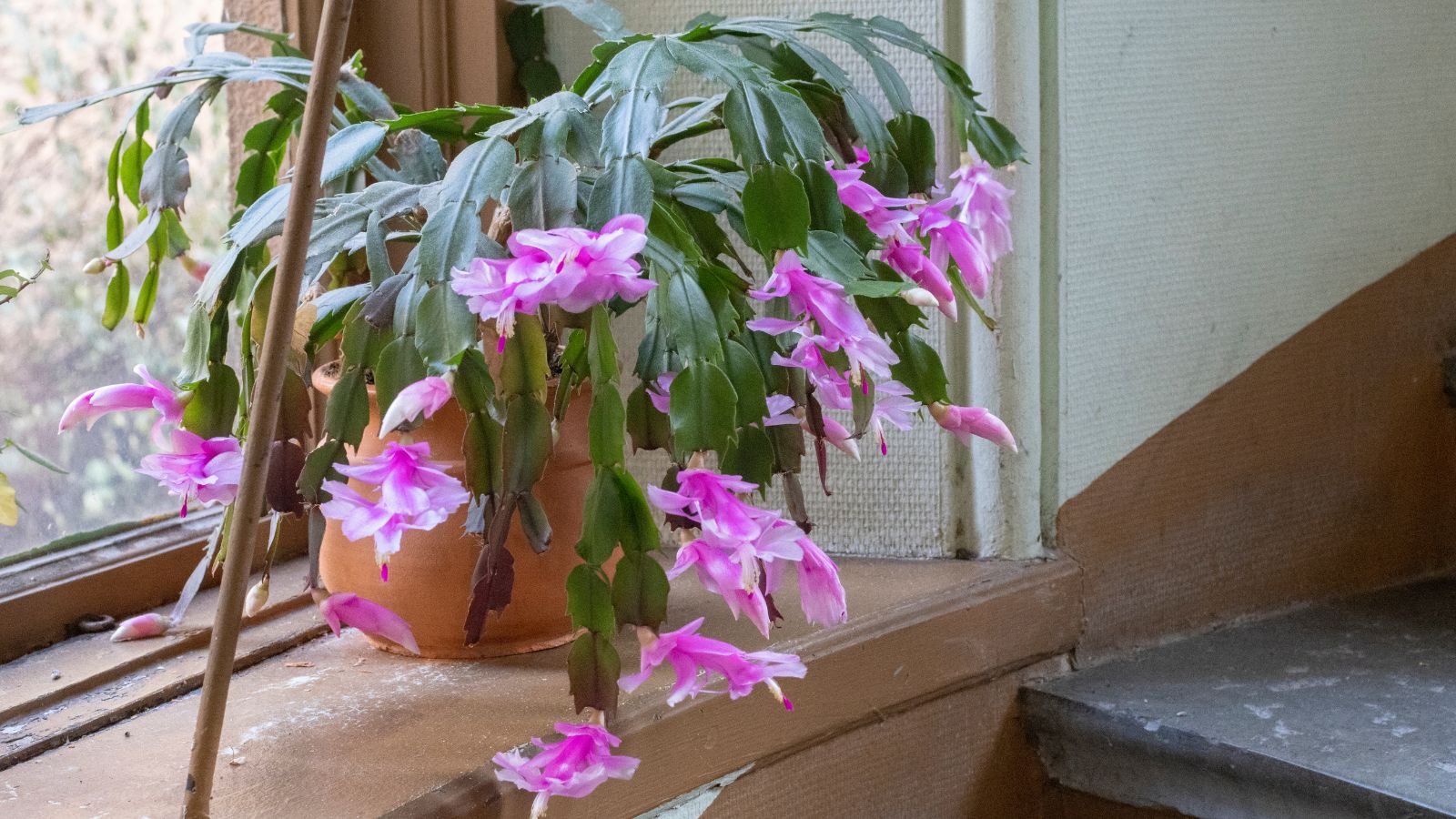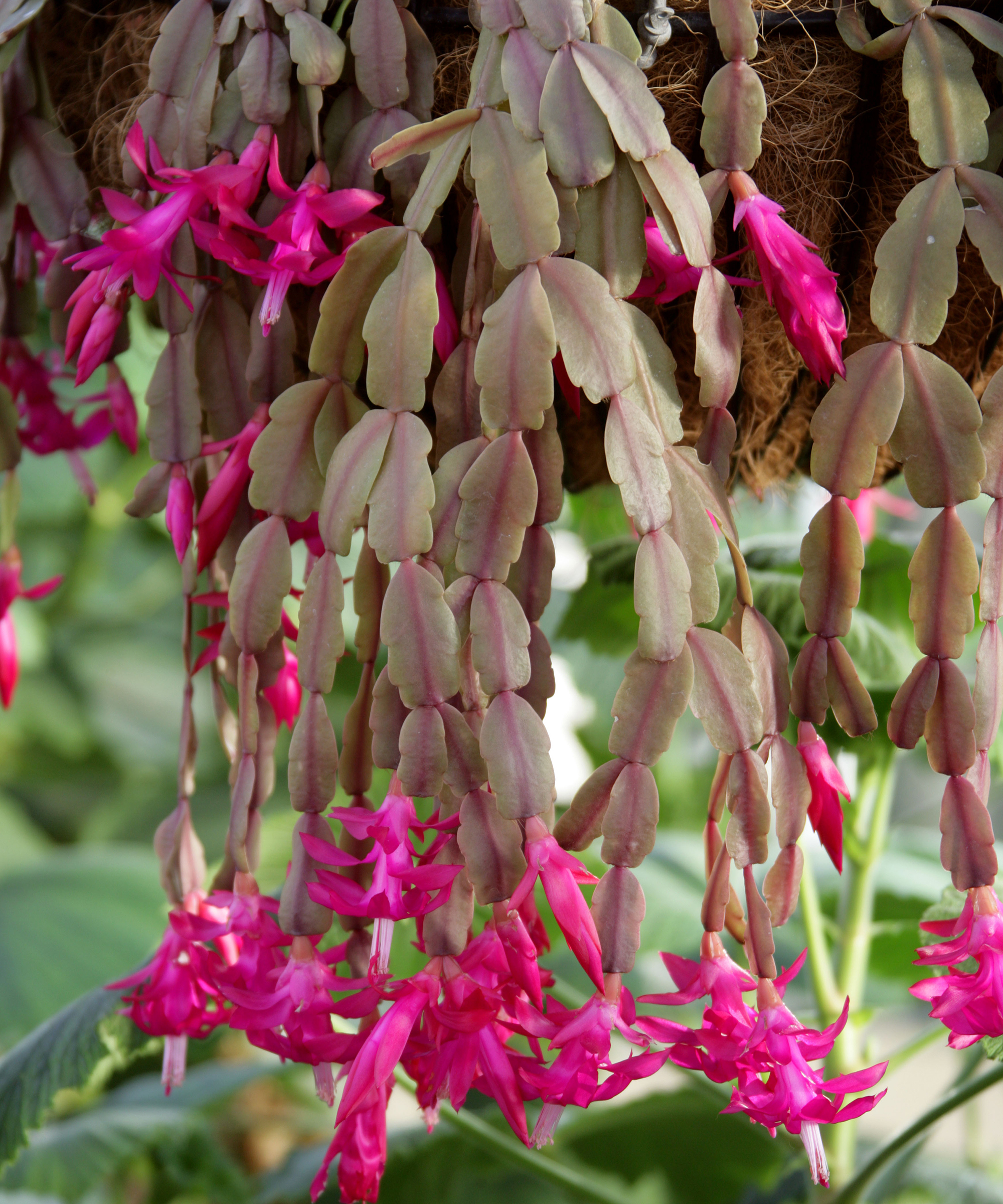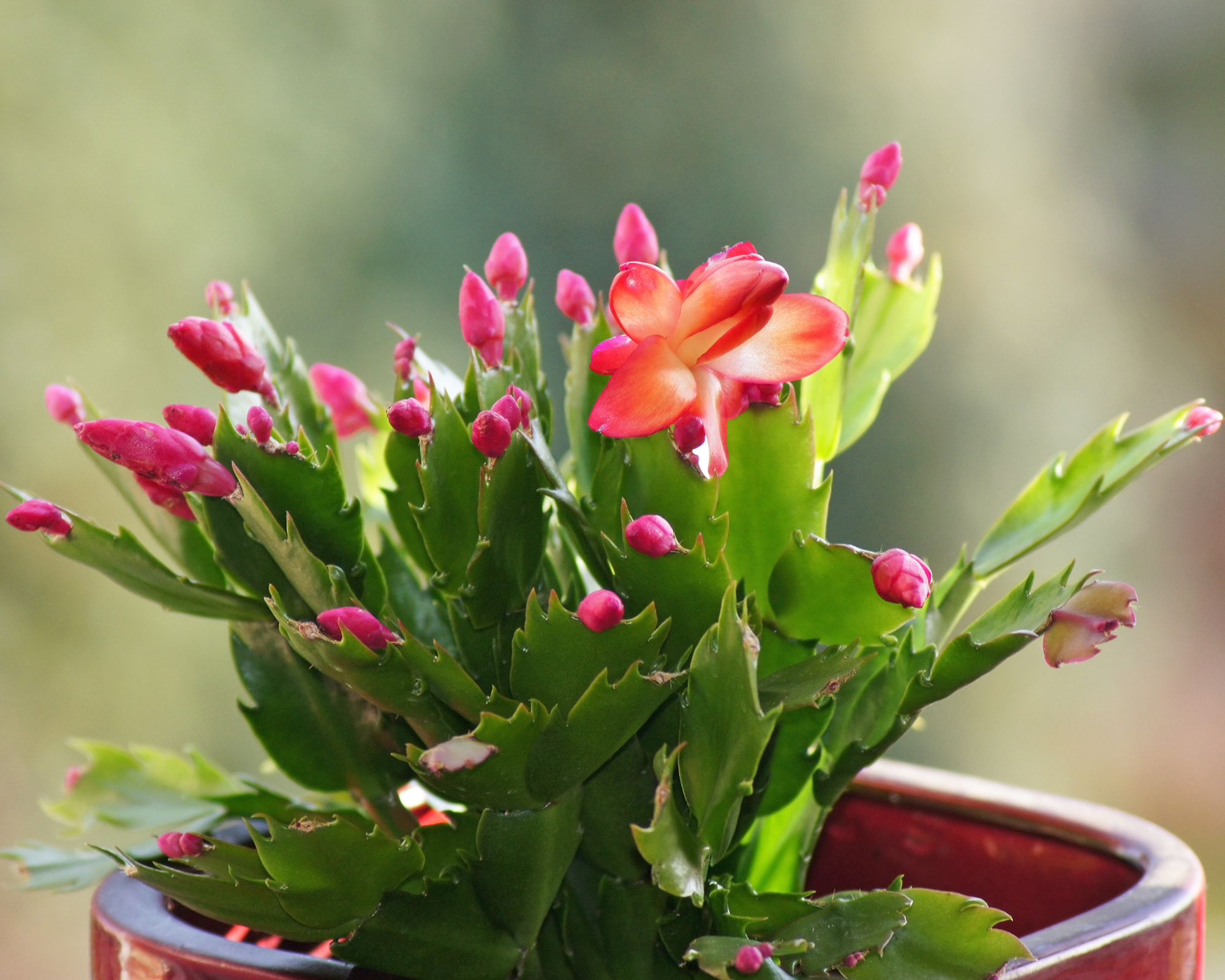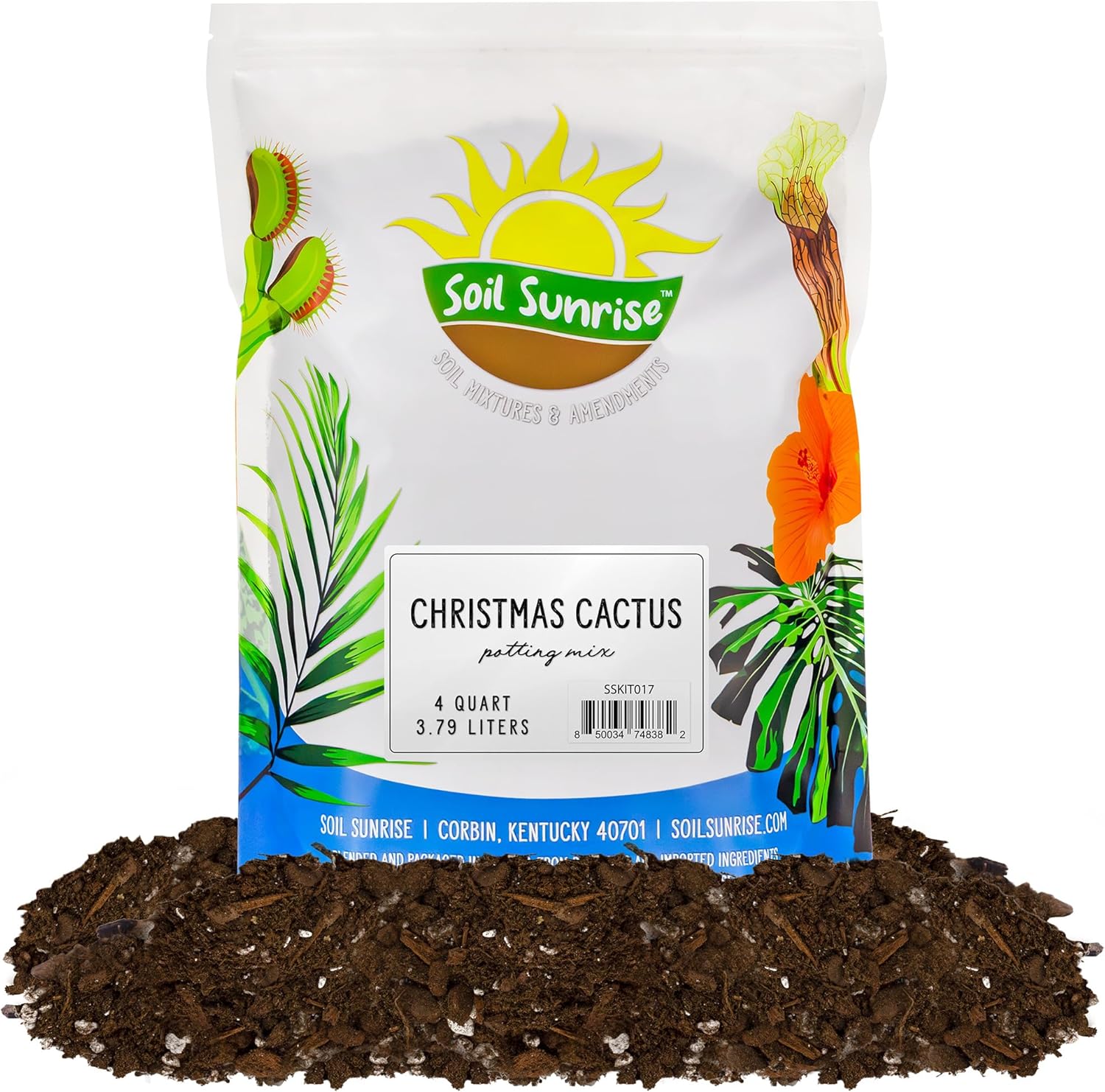Your Christmas Cactus Is Probably a Thanksgiving Cactus! Here’s How to Tell the Difference
Think you know your Christmas from your Thanksgiving cactus? Let’s put it to the test…


If you’ve ever proudly displayed a “Christmas cactus” in December only to notice it blooms earlier (or later!) you’re not alone. Holiday cacti are some of the most misidentified houseplants on the market, and there’s a good chance the one sitting on your windowsill isn’t a Christmas cactus at all, but (drum roll, please!) a Thanksgiving cactus.
Don’t worry,: the difference is subtle, the care is nearly identical, and once you know what to look for, you’ll be able to identify yours in seconds. Plus, you’ll be able to show off a bit when you flex your newfound knowledge down at your local garden center.
Up for a little horticultural learning, then? Of course you are! Here’s how to tell which one you really have.
1. Look at the Leaves
I know, I know; holiday cacti don’t have “leaves” – or, at least, not in the traditional sense. Instead, they have flattened stem segments called cladodes, and these segments hold the biggest visual clue.
Now, a true Christmas cactus (Schlumbergera x buckleyi) should have leaves with flat, smooth, gently scalloped edges; a little like they’ve been made with a cookie cutter. No sharp points, and absolutely no claws.
A bit like this...

On the flipside, a Thanksgiving cactus (Schlumbergera truncata) should have broad, pointed “teeth” or claw-like edges. This is why the Thanksgiving cactus is sometimes nicknamed the “crab cactus”; those cladodes should be pointy and angular, like little crab legs.
Sign up for the Gardening Know How newsletter today and receive a free copy of our e-book "How to Grow Delicious Tomatoes".
Check it out...

2. Note When It Blooms
Bloom timing is the second-biggest giveaway when sussing out if you have a Christmas or Thanksgiving cactus. Of course, this is where most people get confused, because stores often sell Thanksgiving cacti as Christmas cacti, but the clue’s in the name!
Your Thanksgiving cactus should bloom between late October to late November, to coincide with the holiday its named after. True Christmas cacti, like this one from Walmart, bloom between late November to late January (aka closer to Christmas).
They may also bloom a second time in spring if exposed to shorter daylight conditions
It's Not Your Fault
Don't be upset if you made a mistake; most holiday cacti sold in the U.S. today are Thanksgiving cacti, not Christmas cacti, because they grow faster, ship better, and bloom earlier, which makes them perfect for holiday retail displays.
True Christmas cacti (y’know, the one with rounded segments?) are far less common and usually come from older family collections or specialist growers.
Your Christmas cactus essentials list:
So if you bought yours from a big-box store, grocery store, or garden center? There’s a very good chance it’s the Thanksgiving variety.
Don’t worry, though; both plants enjoy bright, indirect light, both prefer slightly cooler temperatures to set buds, both need short-day (long-night) conditions to bloom, and both like to dry out slightly between waterings. The only real difference is bloom timing, which is pretty helpful to know if you’re trying to plan holiday color.
Still, both are beautiful, resilient, long-lived and easy to encourage into yearly blooms… even if you do find one celebrating the holidays a little early.

Kayleigh is an enthusiastic (sometimes too enthusiastic!) gardener and has worked in media for over a decade. She previously served as digital editor at Stylist magazine, and has written extensively for Ideal Home, Woman & Home, Homes & Gardens, and a handful of other titles. Kayleigh is passionate about wildlife-friendly gardening, and recently cancelled her weekend plans to build a mini pond when her toddler found a frog living in their water barrel. As such, her garden – designed around the stunning magnolia tree at its centre – is filled to the brim with pollinator-friendly blooms, homemade bird feeders, and old logs for insects to nest in.


